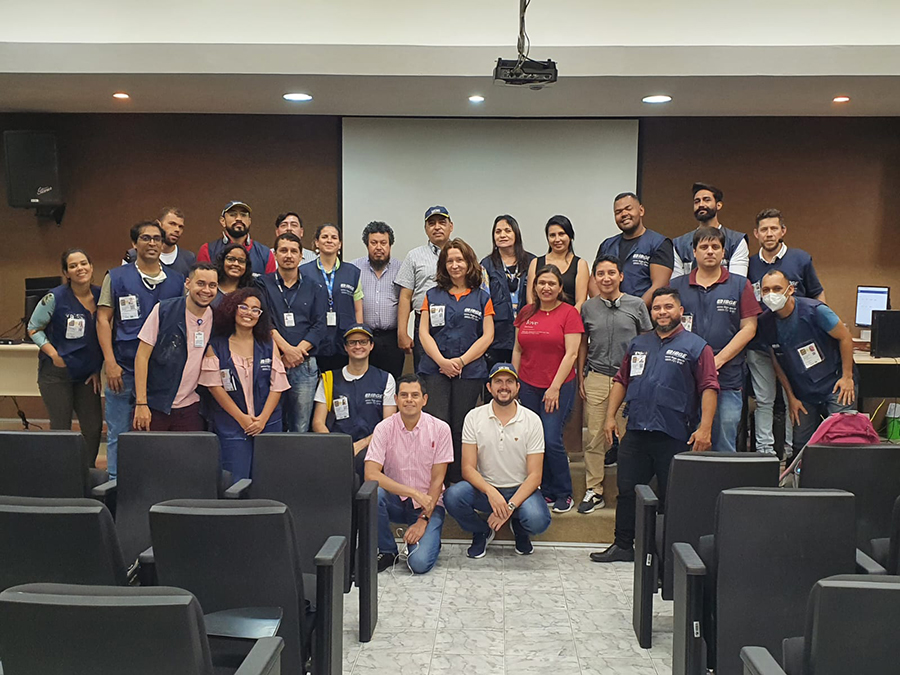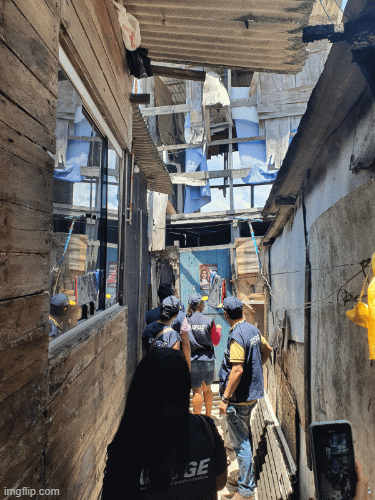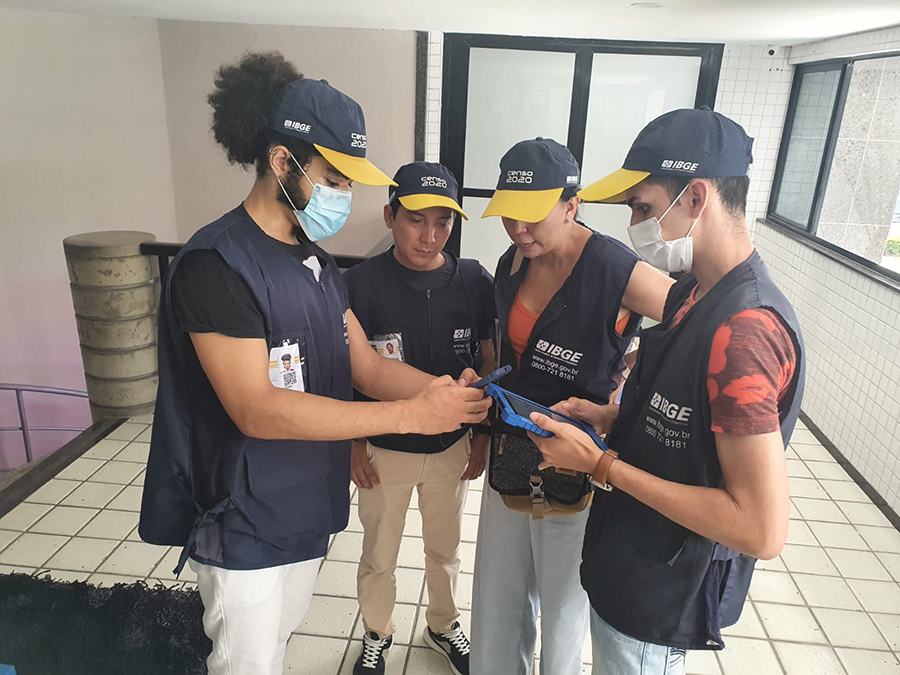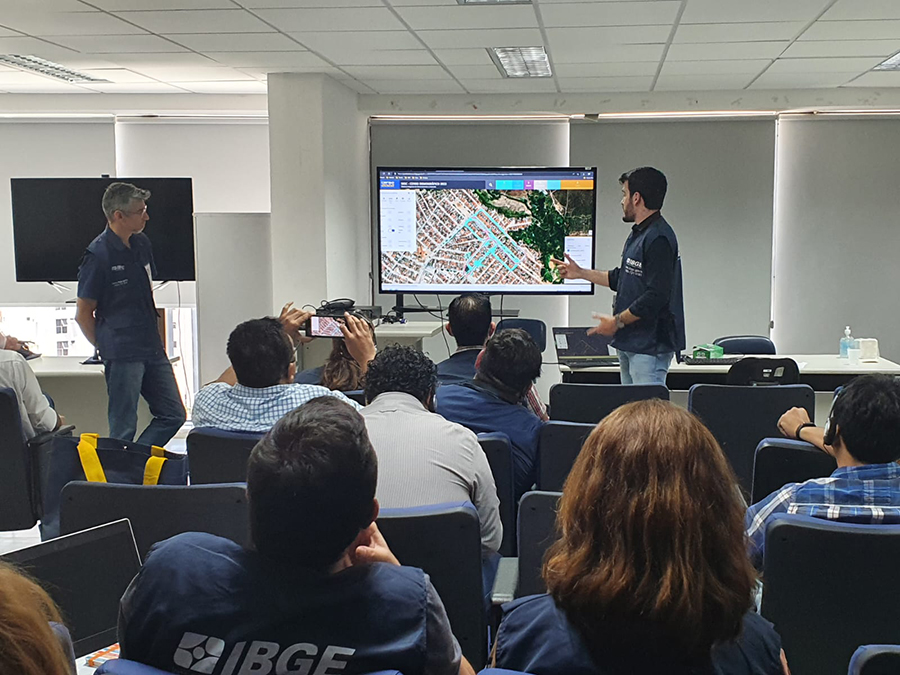Observers from four Latin-American countries follow up 2022 Census in Recife
October 26, 2022 10h25 | Last Updated: November 03, 2022 17h01

National and international observers and IBGE team in a data collection station in the south area of Recife
A rich exchange of experiences among Latin-American countries was the legacy that the Census Observation project left in Recife. Between September 19 and 23, eight representatives of the statistical institutes of Honduras, Colombia, Ecuador and Mexico were in the capital of Pernambuco to act as international observers of the Brazilian census operation, carried out by the IBGE. Four other cities participated in this initiative in Brazil: Florianópolis (SC), Belo Horizonte (MG), Boa Vista (RR) and Cabo Frio (RJ).
“We are a very rich and diverse country, with unique characteristics in terms of size, territory and population. With this interchange, we could also know better how the census works in countries that visited us,” points out Enildo Meira, Coordinator of Repacs in Pernambuco and responsible for organizing the visit of the foreign mission to the state.

In Recife, the group watched an assorted schedule, which included presentations, visits to data collection stations, following up enumerators and supervisors in the field, observation of the training for new enumerators and even a tribute of the Consular Alliance for the Northeast, organized by the honorary consul of Mexico in Recife, Iara Dubeux.
Besides the IBGE representatives and those of the foreign statistical institutes, the Executive-Secretary of International Relations of the Government of Pernambuco, Gilberto Freyre Neto, and consuls Annelijn W. Van den Hoek (Netherlands), Rainier Michael (Slovenia), Guillermo Insfran (Paraguay), Saulo Farias (Romania) and Eduardo Galvão (Colombia) were present.

Besides the foreign mission, Brazilian representatives of the IBGE and of entities like the United Nations Population Fund in Brazil (UNFPA), the International Organization for Migration (IOM) and the Brazilian Cooperation Agency of the Ministry of Foreign Relations. were present.

Enumerator Leonardo and supervisor Gabriel Martins (right) show equipment to Guido Tenemaza and Erika Buitron, of Ecuador, in a facility in Boa Viagem
The group that came to Recife covered several neighborhoods in the south and west areas of the city, having the opportunity to face different realities of the data collection of the 2022 Census. For instance, the tour showed difficulties to access higher-income buildings in the beach of Boa Viagem, the ways in the slopes of the neighborhood of Ibura and the daily life of those living in stilt houses in the neighborhood of Pina, located less than 500 meters of a large shopping mall.
Alejandro Carta, of the National Institute of Geography and Statistics of Mexico, witnessed an important moment of the fieldwork: the break of refusals. “It was interesting to see how the IBGE negotiates well with the informants to convince them to answer the questionnaire. You don´t quit the data collection and the team mates help each other whenever necessary. The action was monitored by him and his colleague Isaac Salcedo, in the neighborhood of Brasília Teimosa, in the south area.

João Marcelo Santos, Technical Coordinator of the Census in Pernambuco (right), and Tiago Figueiredo, Operational Coordinator of the Census in PE, show route supervision in SIGC for international observers
Among the characteristics of the Brazilian census that also caused a stir in the international observers, the scope of the cartographic work carried out by the Territorial Base and the detailed supervision of the enumerators´ work, provided by the computer systems developed by the IBGE, stood out. The text messages for informants and the displays to identify the enumerators in the common areas of the buildings were also considered by them as ideas that might be adapted to their countries.
Even with all these differences, the perception of the foreign mission is that the similarities between Brazil and their countries are even bigger. This includes the enumerators´ approach to the informants and the spatial organization of the cities, especially in lower-income neighborhoods. “In Guayaquil, where I live, we can also find major social contrasts far meters from each other. Very poor houses are neighbors of tall buildings, of medium class. We also have stilt houses. It is a Latin-American reality,” concludes Guido Tenemaza, of the National Institute of Statistics of Ecuador.
